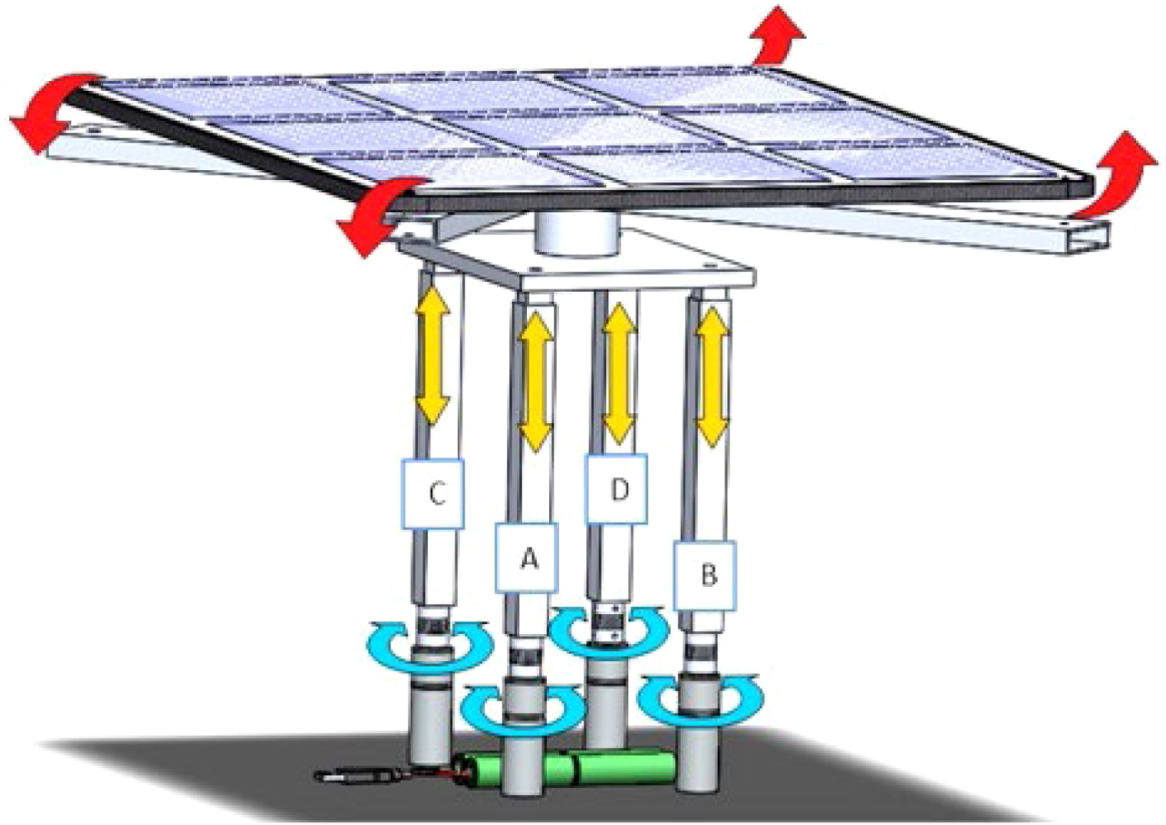Researchers at the University of Mauritius have designed a tracking system that can be used with portable, lightweight PV systems for use in remote areas in tropical climates.
The scientists describe the tracker as a low-cost device using a simplified and mechanically driven tracking mechanism. It can be connected to one solar panel and is able to orientate its linear displacement at each of the four corners of the module itself and make it rotate along the three principal axes. A power screw arrangement driven by DC motors enables the movement of the tracker.
“A motor coupler was used as a connector between the DC motors and lead screw,” they said. “The lead screw had pitch and diameter specifications of 1 mm and 8 mm respectively.”
Through the direction and rotational speed of the motors, PV system owners can achieve their desired tilt angles by precisely adjusting each corner of the solar panel.
“For smooth operation of the solar tracker, the four linear actuators were linked to the main stage by considering a ball-joint system based on aluminum balls of 18 mm in diameter,” they said. “To protect the motor components and electronic circuit from adverse weather conditions, a lightweight protective casing made from aluminum composite panel (ACP) namely, alucobond was used. The protective casing had cross-sectional area and height dimensions of 25 by 25 cm and 20 cm respectively.”
The system moves the panel in accordance with the positioning of the sun based on the sensor data transmitted and processed by the Arduino Uno open-source microcontroller, which follows a voltage difference observed in the corresponding paired sensors due to variation in light intensity.
“The paired motors operate in synchronization but in the opposite direction in order to induce a tilting effect to the solar panels,” they said. “To achieve an optimized orientation in the three principle axes, the remaining two motors also operate in a similar fashion to compensate for tilting of the solar panel in accordance with variation in light intensity as detected by the two additional sensors.”
The academics built a system prototype with a solar module measuring 450 mm x 170 mm with a power output of 22.5 W. The research group said the system was able to generate 37% more current than a reference panel without the tracker.
“The proposed device is projected to produce a total energy output of up to 8100 Wh if operated for 12 h over a 30-day period and if meeting the set target of maximum power output of 22.5 W,” it concluded.
The team described the device in “Low-cost solar tracker to maximize the capture of solar energy in tropical countries,” which was recently published in Energy Reports.
“Rhe cost analysis and portability test showed that the final designed system met the initially set targets in this study,” they said.

Image: University of Mauritius, Energy Reports, Creative Commons License CC BY 4.0
This content is protected by copyright and may not be reused. If you want to cooperate with us and would like to reuse some of our content, please contact: editors@pv-magazine.com.




I am interested in your sunhtracker unit. Please forward me the pricing